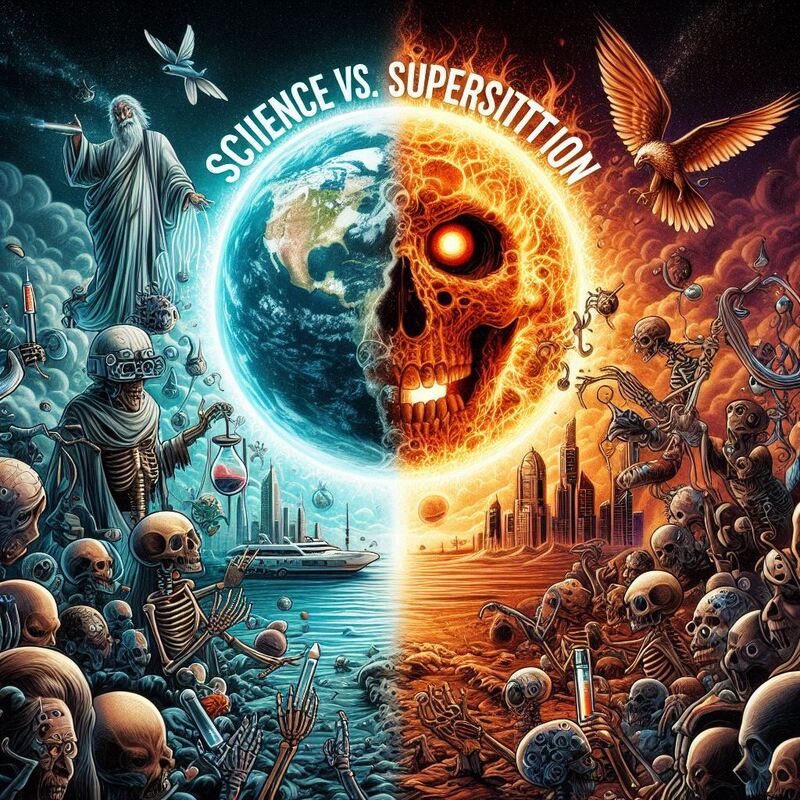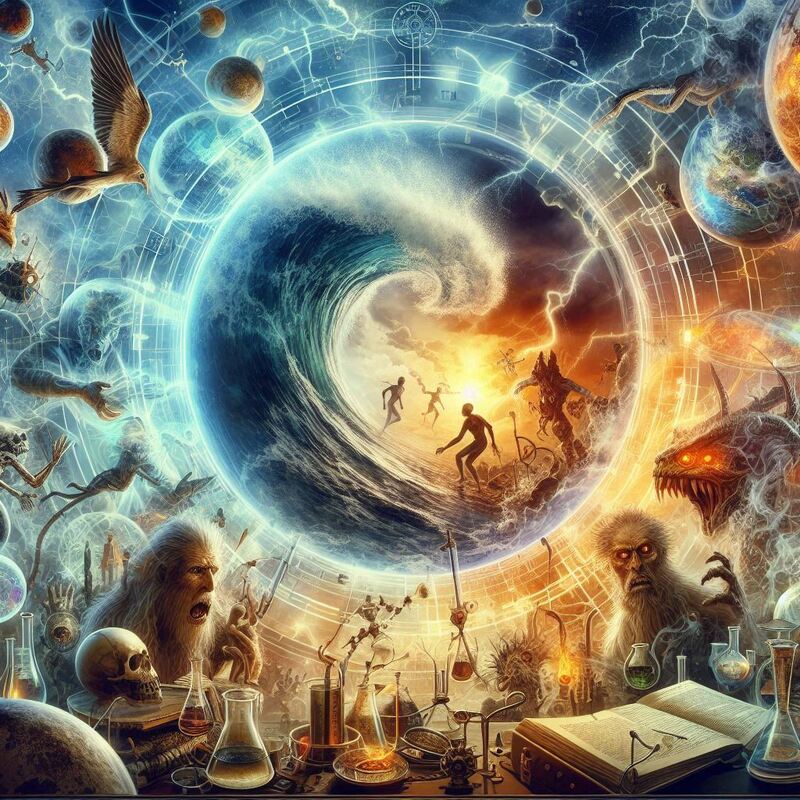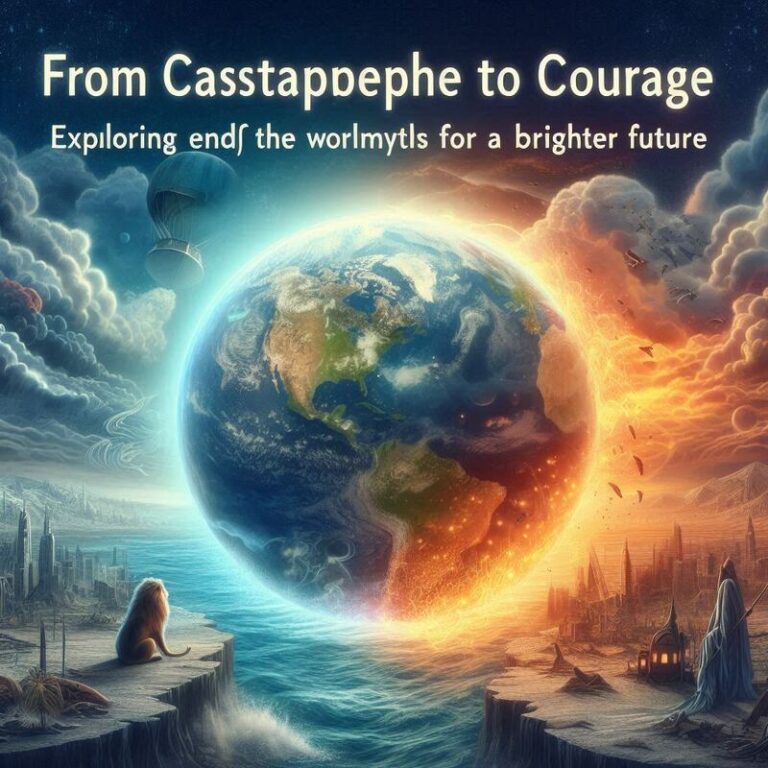The Real Story Behind Apocalyptic Myths

The Real Story Behind Apocalyptic Myths
Science vs. Superstition: The Real Story Behind Apocalyptic Myths
Throughout history, humanity has been fascinated—and often terrified—by the idea of the apocalypse. Apocalyptic myths, rooted in religious, cultural, and scientific beliefs, have permeated societies across the globe, shaping worldviews and influencing behaviors. This article delves into the dichotomy of science versus superstition, exploring the origins, evolution, and psychological impact of apocalyptic myths while highlighting how scientific knowledge has debunked many of these fears.
Origins of Apocalyptic Myths

Apocalyptic myths have deep roots in ancient civilizations and religious traditions. The concept of an impending end of the world often emerges from interpretations of natural disasters, celestial events, and societal upheavals. Ancient texts, such as the biblical Book of Revelation and the Mayan Long Count calendar, have contributed to enduring beliefs in catastrophic endings and cosmic cycles.
Religious and Cultural Influences

Many apocalyptic myths are intertwined with religious beliefs and prophecies. End-time scenarios, often described as divine judgment or purification, serve to reinforce moral teachings and inspire faith. Across different cultures, similar themes of destruction and renewal resonate, reflecting shared anxieties and hopes for spiritual transformation.
Scientific Perspectives: Understanding Natural Phenomena

In contrast to supernatural interpretations, scientific inquiry seeks to explain natural phenomena through empirical evidence and rational analysis. Meteorological events, geological processes, and astronomical phenomena once attributed to supernatural wrath or celestial omens are now understood through disciplines such as physics, astronomy, and earth sciences.
Evolution of Apocalyptic Beliefs

Apocalyptic beliefs evolve over time, adapting to social, political, and technological changes. Millennia-old prophecies and predictions continue to capture public imagination, often revitalized by contemporary interpretations and media portrayals.
Modern Interpretations: Technology and Globalization

The Real Story Behind Apocalyptic Myths
Advancements in communication and media dissemination amplify apocalyptic narratives, contributing to widespread awareness and anxiety. In the digital age, apocalyptic theories spread rapidly through online forums, social media platforms, and documentaries, fueling speculation and debate. Scientific discoveries, such as space exploration and climate change research, also intersect with apocalyptic themes, influencing contemporary interpretations of global crises.
Pop Culture and Entertainment

Apocalyptic scenarios have become a staple of popular culture, depicted in literature, films, and television series. Dystopian fiction explores imagined futures plagued by environmental collapse, pandemics, or technological disasters, reflecting contemporary anxieties and ethical dilemmas. While entertaining, these narratives often blur the line between fiction and reality, shaping public perceptions of existential threats.
The Real Story Behind Apocalyptic Myths
Psychological Impact and Societal Responses

Apocalyptic myths evoke profound psychological responses, ranging from fear and anxiety to curiosity and fascination. The anticipation of catastrophic events can influence individual behaviors, societal norms, and policy decisions, highlighting the psychological power of collective beliefs.
Fear and Anxiety
The Real Story Behind Apocalyptic Myths
Uncertainty about the future and existential threats fuel apocalyptic fears, triggering psychological responses such as stress, anxiety, and hypervigilance. Media coverage of potential risks, from natural disasters to global pandemics, amplifies public concern and shapes perceptions of vulnerability.
Coping Mechanisms and Resilience
Despite the pervasive nature of apocalyptic narratives, individuals and communities demonstrate resilience through adaptive coping mechanisms and social support networks. Preparedness initiatives, disaster response strategies, and community resilience programs foster proactive responses to potential threats, emphasizing practical solutions over fatalistic attitudes.
Debunking Apocalyptic Myths: Insights from Science

The Real Story Behind Apocalyptic Myths
Scientific knowledge challenges apocalyptic myths by offering evidence-based explanations and dispelling misconceptions. Understanding the natural world through empirical research and critical thinking promotes informed decision-making and mitigates unfounded fears.
Climate Change and Environmental Sustainability
The discourse on climate change illustrates the intersection of scientific inquiry and apocalyptic narratives. While climate scientists warn of escalating environmental risks and ecological disruptions, advocacy for sustainable practices and policy interventions promotes resilience and adaptation strategies. Scientific consensus underscores the urgency of addressing climate-related challenges through global cooperation and innovation.
Global Health and Pandemic Preparedness
The Real Story Behind Apocalyptic Myths
The COVID-19 pandemic has highlighted the significance of public health interventions and scientific advancements in mitigating infectious diseases. Epidemiological research, vaccination campaigns, and healthcare infrastructure development demonstrate the critical role of evidence-based practices in pandemic preparedness and response. Scientific collaboration and data-driven approaches enhance pandemic resilience and support informed decision-making at local, national, and international levels.
The Role of Education and Critical Thinking

Promoting scientific literacy and critical thinking skills is essential for navigating complex societal challenges and distinguishing between factual information and misinformation. Educational initiatives, media literacy programs, and interdisciplinary research contribute to informed public discourse and evidence-based policymaking.
Empowering Communities
The Real Story Behind Apocalyptic Myths
Empowering individuals and communities through access to reliable information and educational resources fosters resilience and adaptive capacities. Engaging diverse perspectives and promoting open dialogue facilitate constructive responses to global uncertainties and promote collective well-being.
Conclusion
Science and superstition represent contrasting approaches to understanding the world and interpreting existential threats. While apocalyptic myths persist in cultural narratives and popular imagination, scientific knowledge offers insights into natural phenomena and promotes resilience through evidence-based practices. By examining the origins, evolution, and psychological impact of apocalyptic beliefs, we gain a deeper understanding of human perceptions and responses to uncertainty. Embracing scientific inquiry, critical thinking, and proactive engagement enables societies to address global challenges, foster resilience, and envision a future shaped by informed decision-making and collective action.


